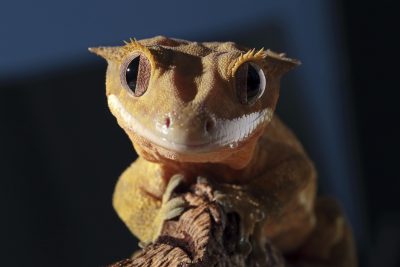By EcoRise and the Biomimicry Institute
If you find yourself scrambling for ways to engage your students in environmental literacy, you’re not alone! Finding clever, hands-on lessons and activities in today’s STEM classrooms can be challenging for any topic, particularly sustainability. So, although we all agree on the importance of inspiring our future generations to be responsible guardians of Mother Earth, it doesn’t make project-based instruction on the subject any easier!
That’s why biomimicry—learning from nature to design solutions to social problems— can make all the difference in the world. By applying nature’s strategies to find viable solutions to issues like climate change, students are able to see through a more natural, sustainable lens. For example, think about the collective intelligence of honey bees working together to accomplish more. Here are four ways to bring biomimicry into your classroom:

1) Inspire your students with biomimicry.
Inspire your students to explore nature’s patterns and strategies and mimic them as they design their own solutions to a problem. To get your students started and excited about biomimicry in the classroom, download these inspiring biomimicry/science posters.
2) Cultivate an understanding of biomimicry basics.
Biomimicry is a rich framework for introducing a whole host of topics, from science and engineering to environmental literacy to climate change. Wondering how to incorporate biomimicry into your instruction? Download this guidefrom the Biomimicry Institute for an introduction to biomimicry core concepts plus teaching strategies and ideas. It’s a great way to dig in!
3) Get outside!
One of the best parts of learning about nature-inspired design is stepping out of the classroom and into nature. Biomimicry encourages students to explore their ecosystems in a whole new way by observing, sketching, exploring, and learning how living systems interconnect and thrive. Here’s a great activity to help your students see their surroundings in a new light:
Go for a walk outside around your school or in a nearby park. Or plan to visit a nature preserve, beach, forest, or other natural area. Encourage students to find their “local heroes” or the organisms that have adapted to the particular circumstances in your part of the world. What functions are most important for their survival (e.g. keeping warm, conserving water, etc.)? What strategies do they use to do those things? Ask students to record their findings in a nature journal, sketch the organisms or snap a photo of them. It’s a great way to begin observing what can learned from nature, right in your own backyard.

4) Take the challenge!
Challenge your students to learn about biomimicry while applying it to help solve big sustainability issues like climate change! This Design Challenge Module from Biomimicry and Science: Applying Nature’s Strategies provides a step-by-step guide for leading students through a biomimicry challenge or other biomimicry capstone project. Ready to dig deeper? The full Biomimicry and Science curriculum provides middle and high school science teachers with 15 unique and engaging biomimicry-based science lessons rooted in chemistry, physics, and biology. Through these modules, students not only learn about nature-inspired design, but also how to develop solutions that lead to a healthier planet.
JOIN US AT THE GREEN SCHOOLS CONFERENCE TO LEARN MORE!
Join us, along with the Biomimicry Institute, at the Green Schools Conference & Expo 2018in Denver, CO on Thursday, May 3, 2018, at 9:45 am for this 2-hour session: Empower Your Students to Design Bio-Inspired Solutions to Climate Change by Presenter Gretchen Hooker, Education Resources Manager, Biomimicry Institute, and Co-Presenter: Abby Randall, Program Director, EcoRise.
Session highlights:
- Learn how educators are using biomimicry to foster environmental literacy and increase student engagement in STEM classrooms.
- Experience a set of free project-based, bio-inspired design activities that promote student innovation and critical thinking skills, and empower students to tackle climate change in their communities.
Learn more about the session here.


